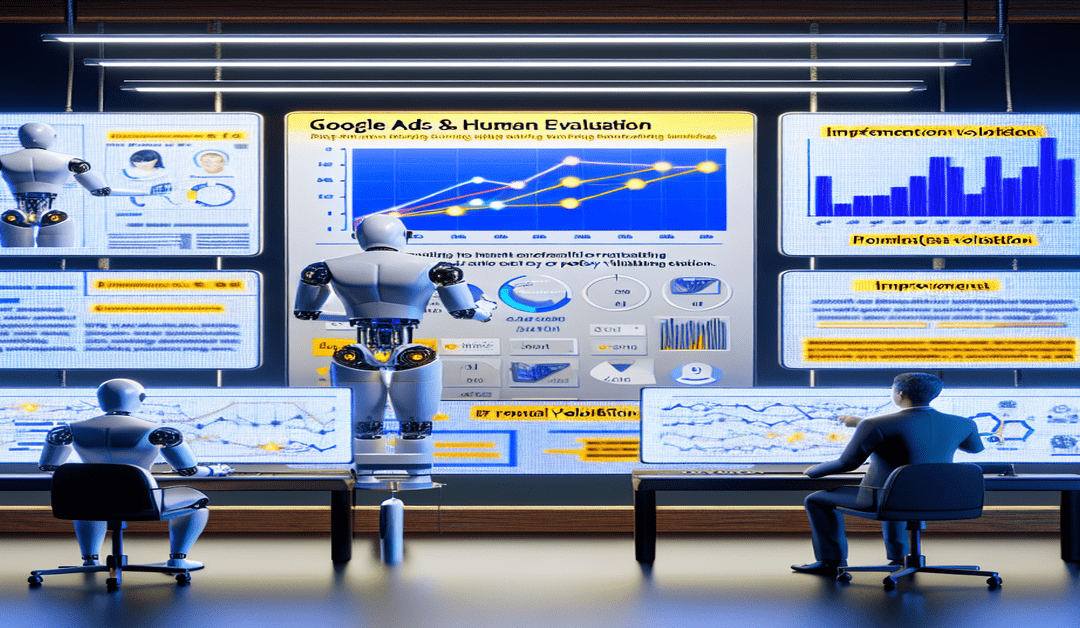Google Ads: Balancing AI and Human Evaluation for Policy Enforcement
In the rapidly evolving world of digital advertising, maintaining a safe and trustworthy ecosystem is paramount. Google Ads, one of the largest advertising platforms, faces the challenge of detecting and removing policy-violating content from its platform. To tackle this issue effectively, Google employs a sophisticated combination of artificial intelligence (AI) and human evaluation.
The Power of AI in Ad Review
Google’s approach to ad review relies heavily on the power of AI. By leveraging machine learning algorithms modeled on the decisions of human reviewers, Google can automatically detect and block a significant portion of policy-violating ads. This automated process enables Google to handle the massive scale of ads submitted to its platform efficiently.
However, AI is not a silver bullet. While it excels at identifying clear-cut violations, there are instances where the context and nuance of an ad require human judgment. In such cases, AI acts as a first line of defense, flagging potentially problematic content for further review by trained human operators and analysts.
The Human Touch: Ensuring Nuanced Decisions
Human evaluation plays a crucial role in Google’s ad review process. When AI flags content for review, trained human operators and analysts step in to make nuanced decisions. These experts consider the context, intent, and potential impact of the ad, ensuring that the final verdict aligns with Google’s policies and values.
The importance of human judgment cannot be overstated, especially when it comes to complex or sensitive topics. For example, an ad discussing mental health issues might be flagged by AI due to the presence of certain keywords. However, a human reviewer can determine whether the ad is genuinely promoting helpful resources or exploiting vulnerable individuals.
Data-Driven Approach to Policy Enforcement
To determine policy violations, Google relies on a wide range of data sources. These include:
– Ad content
– Account information
– Websites associated with the ads
– User complaints and feedback
– Consumer reviews
– Regulatory warnings
– Third-party sources
By analyzing this diverse set of data, Google can paint a comprehensive picture of an ad’s compliance with its policies. This data-driven approach ensures that decisions are based on evidence rather than assumptions or biases.
Continuous Improvement through Feedback Loop
Google’s ad review process is not static. The results from human reviews are continuously fed back into the AI models, allowing them to learn and improve over time. As the AI becomes more sophisticated, it can accurately identify a broader range of policy violations, reducing the workload on human reviewers.
This feedback loop creates a virtuous cycle of improvement. As the AI models become more effective, human reviewers can focus their attention on the most complex and nuanced cases. This synergy between AI and human judgment ensures that Google’s ad review process remains robust and adaptable to emerging threats.
The Scale of Enforcement
The combination of AI and human evaluation is not just a matter of thoroughness; it is also a necessity given the immense scale of Google’s advertising ecosystem. With millions of advertisers and billions of ads submitted each year, manual review alone would be impractical, if not impossible.
In the past, Google has reported removing billions of ads and suspending millions of advertiser accounts for policy violations. These numbers underscore the importance of having an efficient and scalable enforcement mechanism in place.
Transparency and Trust
By shedding light on its ad review process, Google aims to foster transparency and trust among its users and advertisers. Understanding how AI and human evaluation work together to maintain a safe advertising environment can reassure stakeholders that their interests are being protected.
Moreover, this transparency can serve as a model for other industry players. As digital advertising continues to evolve, **sharing best practices** and **promoting ethical standards** becomes increasingly important. Google’s approach demonstrates that a balance between technology and human judgment is not only possible but essential for the long-term health of the industry.
Looking Ahead
As AI continues to advance, it is likely that its role in ad review will expand. However, the need for human evaluation will persist. The complex nature of language, context, and cultural nuances means that human judgment will remain an integral part of the equation.
The future of ad review lies in the **seamless integration of AI and human expertise**. By leveraging the strengths of both, platforms like Google Ads can continue to provide a safe and trustworthy environment for users and advertisers alike.
#GoogleAds #PolicyEnforcement #AIandHumanEvaluation
-> Original article and inspiration provided by Barry Schwartz
-> Connect with one of our AI Strategists today at ReviewAgent.ai

